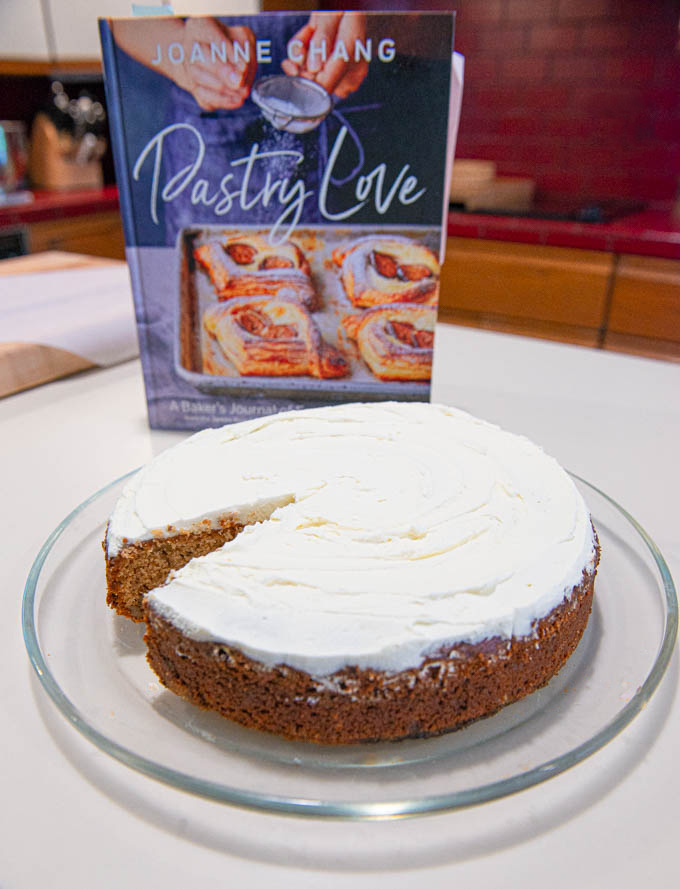Nutmeg has long been highly valued–sometimes commanding astronomical prices.
In 14th century Europe, a pound of nutmeg could set you back seven fat oxen! Wow!
Nutmeg’s story begins early. According to food historian Harold McGee (On Food and Cooking), nutmeg is known to have been grown in Southeast Asia as early as the 4th century. By the Middle Ages, traders from India and the Middle East were making enormous profits trading the spice. They claimed nutmeg possessed medicinal, aphrodisiac and perfume qualities.
Later still, the value of nutmeg hit stratospheric heights when it is was rumored to be a plague cure. Then as now, desperate people grasped for far-fetched cures for horrific diseases.
Nutmeg was political, too.
During the Age of Exploration that spanned the 15th-17th centuries, plentiful crops of nutmeg (and cloves) in the Spice Islands of Indonesia pitted the European Sea powers in a frantic struggle for colonies and spoils. The profit potential was enormous. A single nutmeg tree could live for 100 years with a yearly crop of 20,000 individual nutmegs. (Wow…again!)
It took another couple of centuries to discover that the spice trees could be successfully grown in the Caribbean and beyond. Today Indonesia, India and Guatemala produce 85% of the world’s nutmeg.
This recipe for Syrian Nutmeg Cake is from Joanne Chang’s cookbook Pastry Love. You can buy the cookbook at your local bookstore or from Amazon here. There also are a number of online recipes for Syrian or Armenian Nutmeg cake. You can find Food 52’s version here. The Food 52 cake omits the frosting in favor of a generous dusting of powdered sugar.
The cost of nutmeg has thankfully moderated over the years. You can find reasonable prices in your local supermarket. Better yet, you can find whole nutmegs at many Indian and Middle Eastern stores at reasonable prices, allowing you to grate your own and add pungent freshly-grated nutmeg to recipes like this Syrian Nutmeg Cake. Gone are the days when you had to bet the farm (and your seven fat oxen!) on the spice.
Here is how I baked this cake in my kitchen.
Syrian Nutmeg Cake
Ingredients
- 1 3/4 C. firmly-packed brown sugar
- 1 C. whole wheat flour
- 1 C. all-purpose flour
- 1/2 C. unsalted butter (meltd)
- 1 C. Greek yogurt
- 1 C. walnuts (roughly chopped)
- 1 large egg (at room temperature)
- 1 t. baking powder
- 1 t. lightly-packed freshly grated nutmeg
- 1/2 t. baking soda
- 1/4 t. kosher salt
- 1/2 C. heavy cream
- 1/2 C. mascarpone or creme fraiche
- 2 T. powdered sugar
- 1/4 t. pure vanilla extract
Directions
- Step 1 Preheat oven to 350 degrees F.
- Step 2 Prepare a 9 inch springform pan by lining it with a circle of parchment paper.
- Step 3 Combine brown sugar, whole wheat flour, all-purpose flour and melted butter in the bowl of a standing mixer. Mix. You want the ingredients to be totally mixed together and you want the butter mixture to have a crumbly texture.
- Step 4 Press 1 C. of the crumb mixture firmly onto the bottom of your springform pan. Set aside.
- Step 5 Combine yogurt, walnuts, egg, baking powder, nutmeg, baking soda and salt with the remaining buttery crumbs until the ingredients are totally mixed. Spoon this mixture into the springform pan and tap with an offset spatula to even the top of the batter.
- Step 6 Bake for about 1 hour to 70 minutes. Rotate your pan midway through baking. Your cake will be done when a skewer inserted into the middle of the cake comes out clean and when the middle of the cake springs back when pressed. Allow cake to cool completely.
- Step 7 When the cake is cooled, invert onto a broad plate. Remove the parchment. Invert again onto your serving plate.
- Step 8 To make the frosting, Whisk the heavy cream, mascarpone (or creme fraiche), powdered sugar and vanilla together until you have a fluffy and light frosting. Spread this frosting on top of the cake in a circular pattern.



